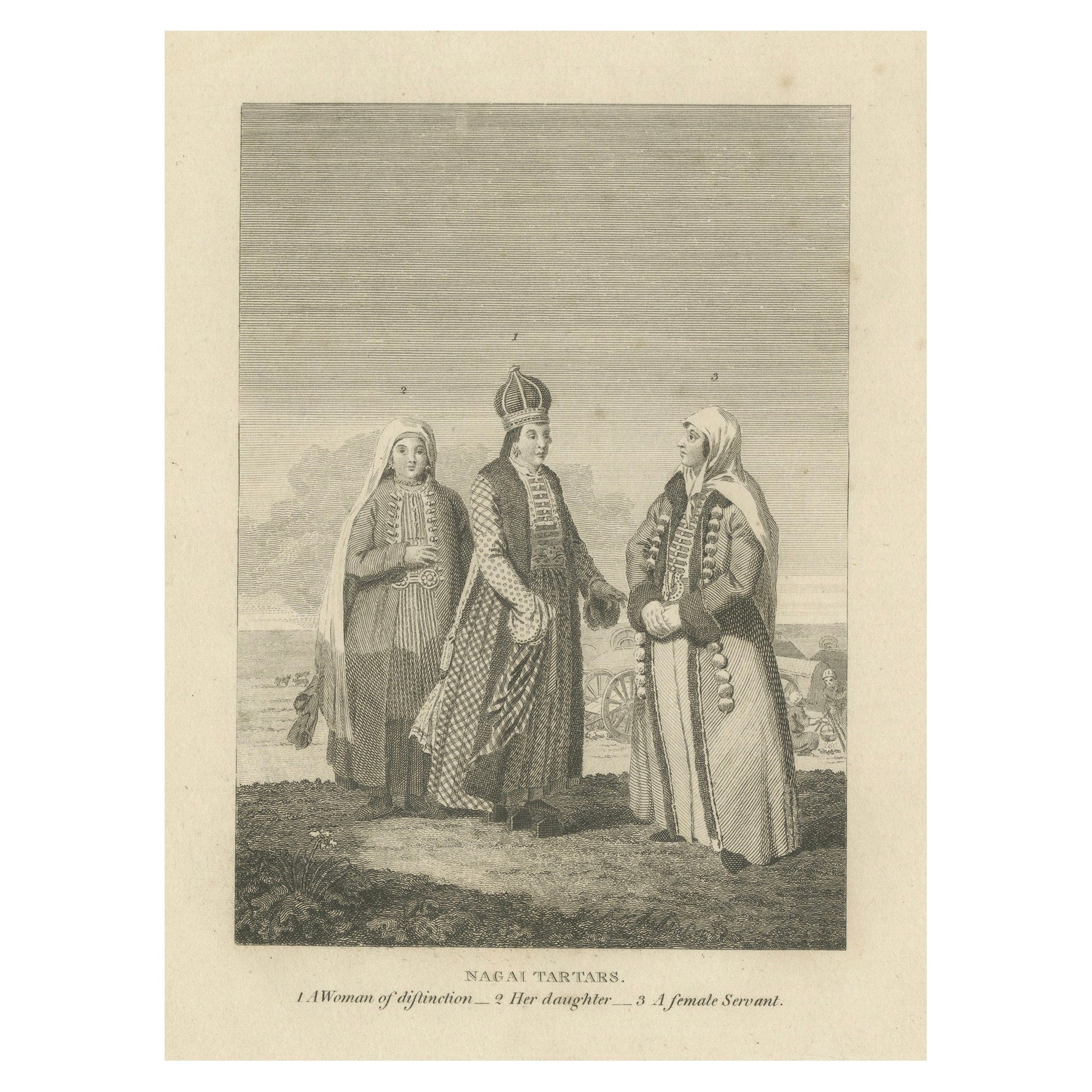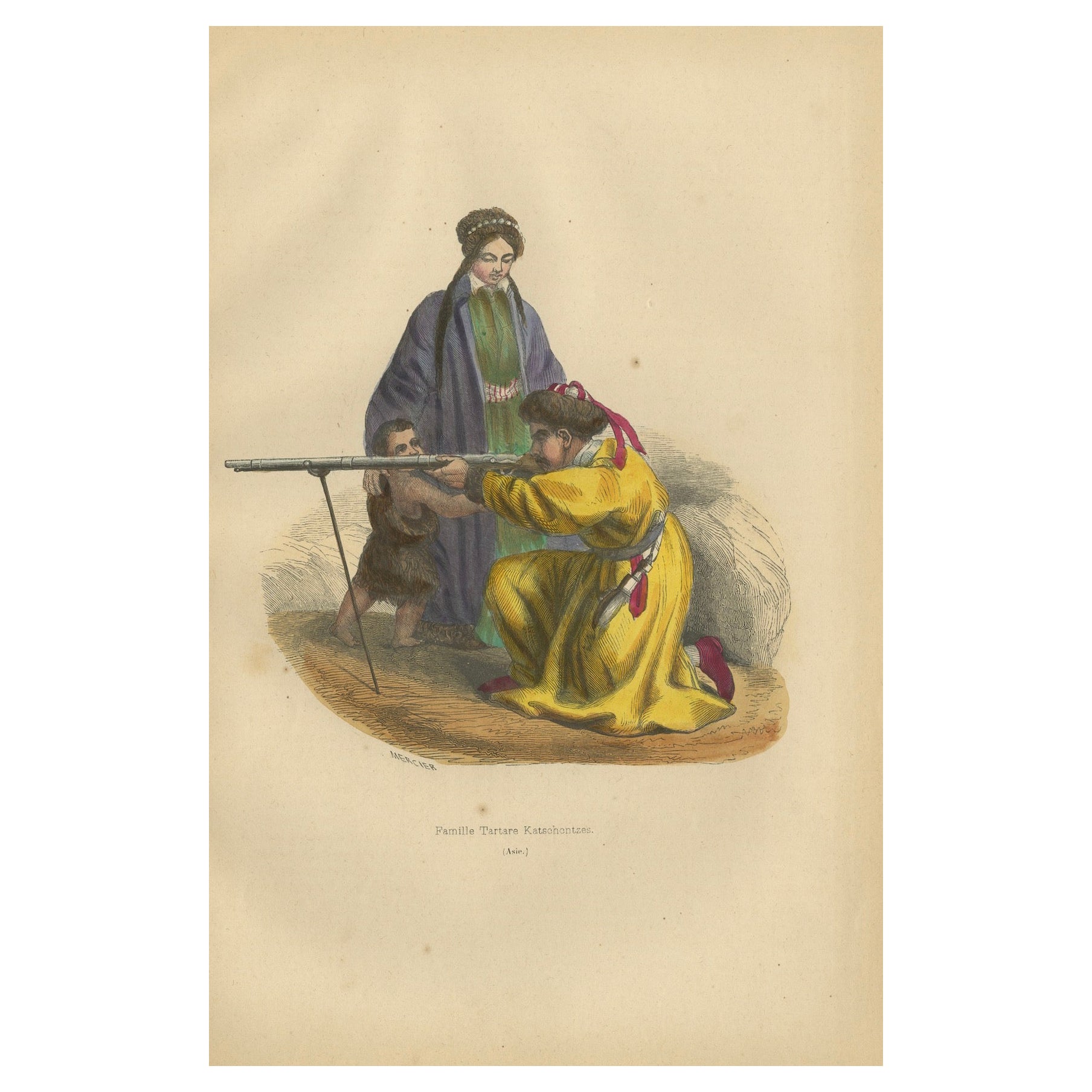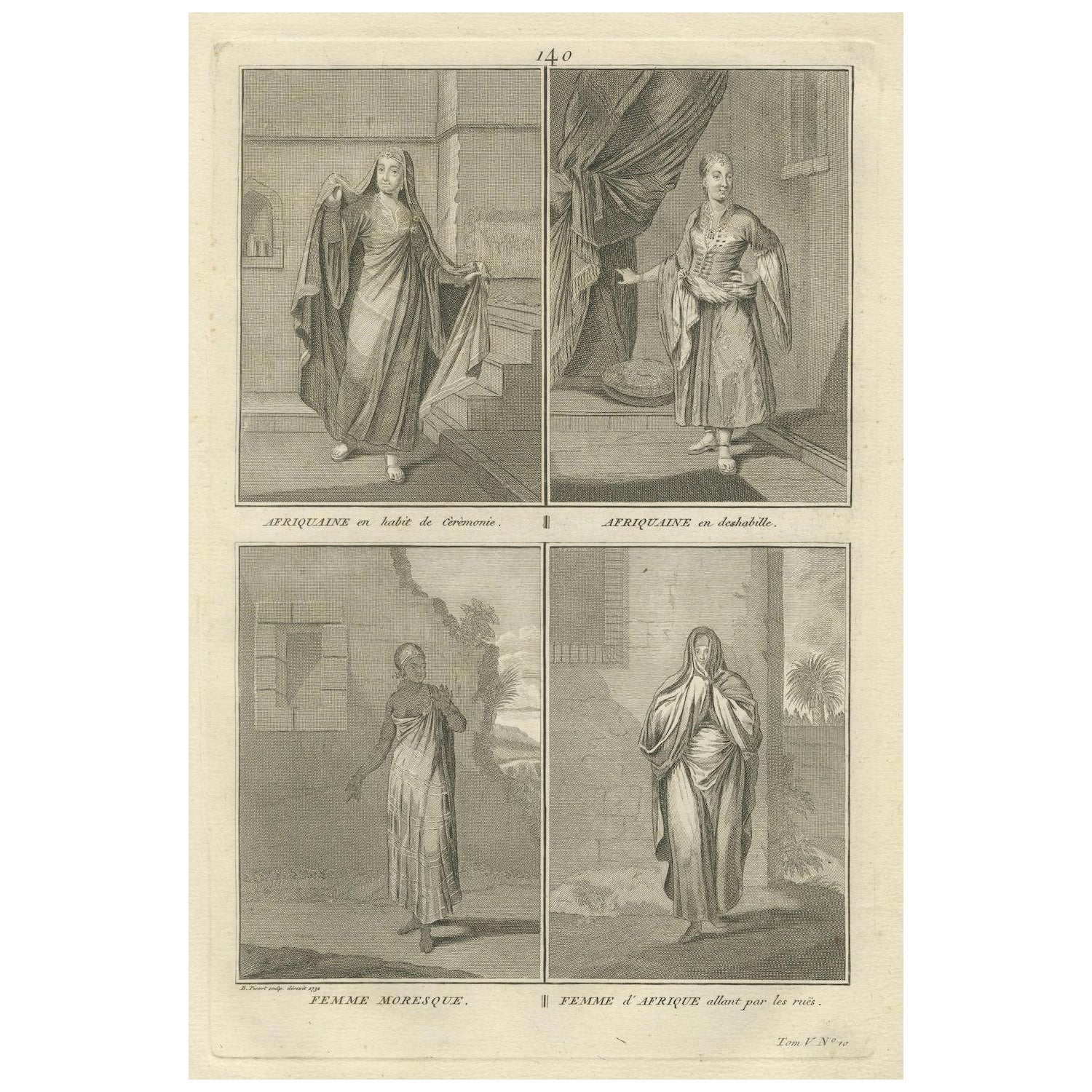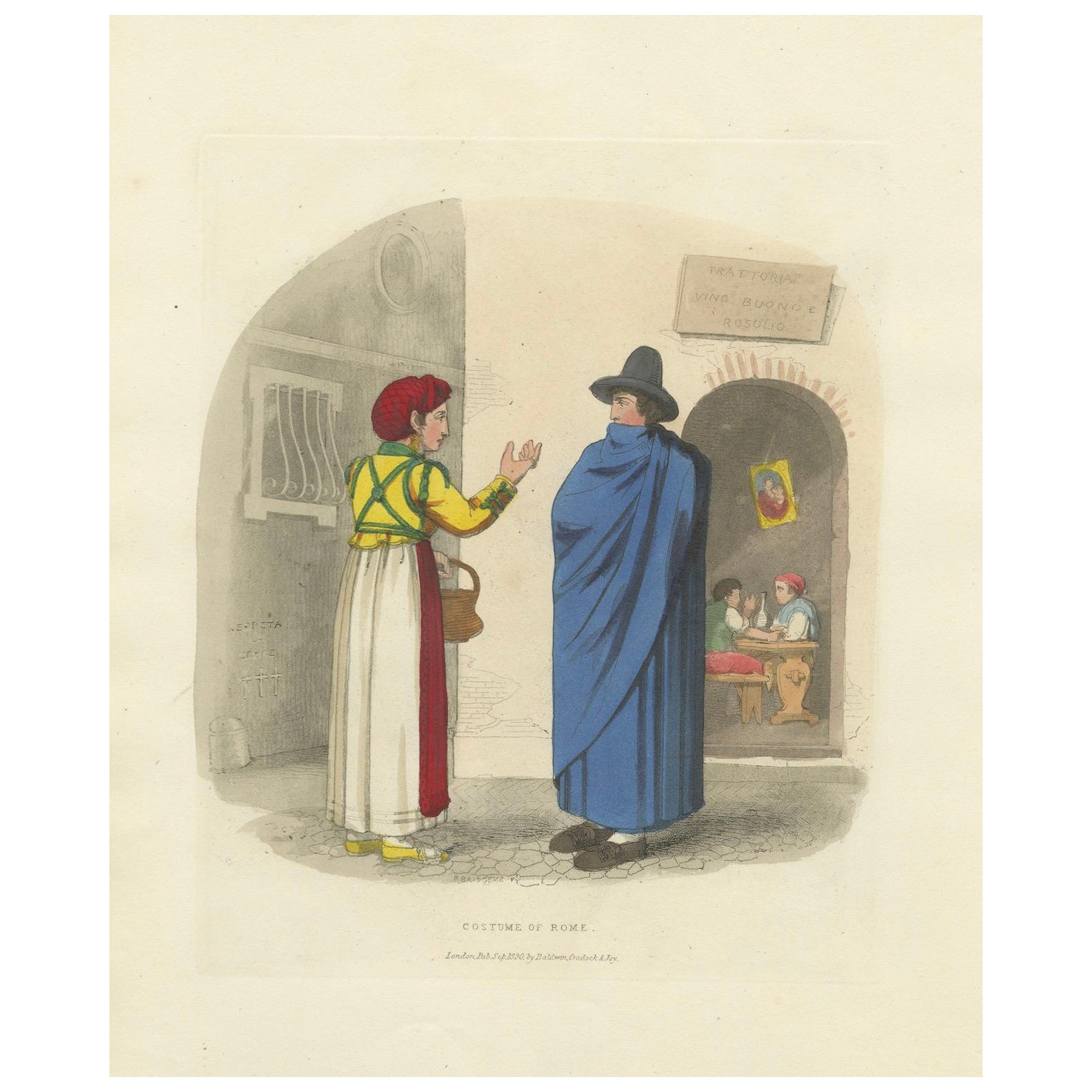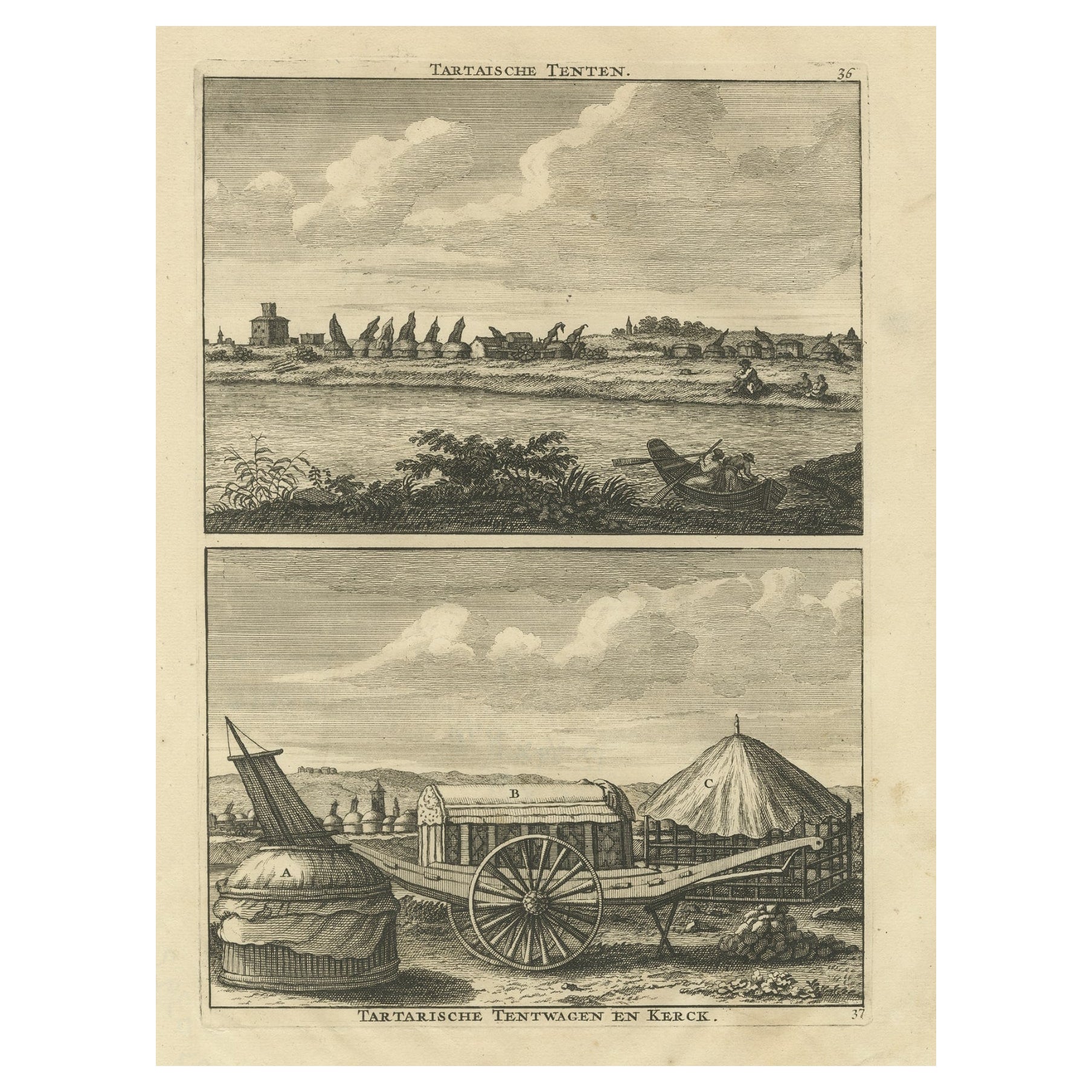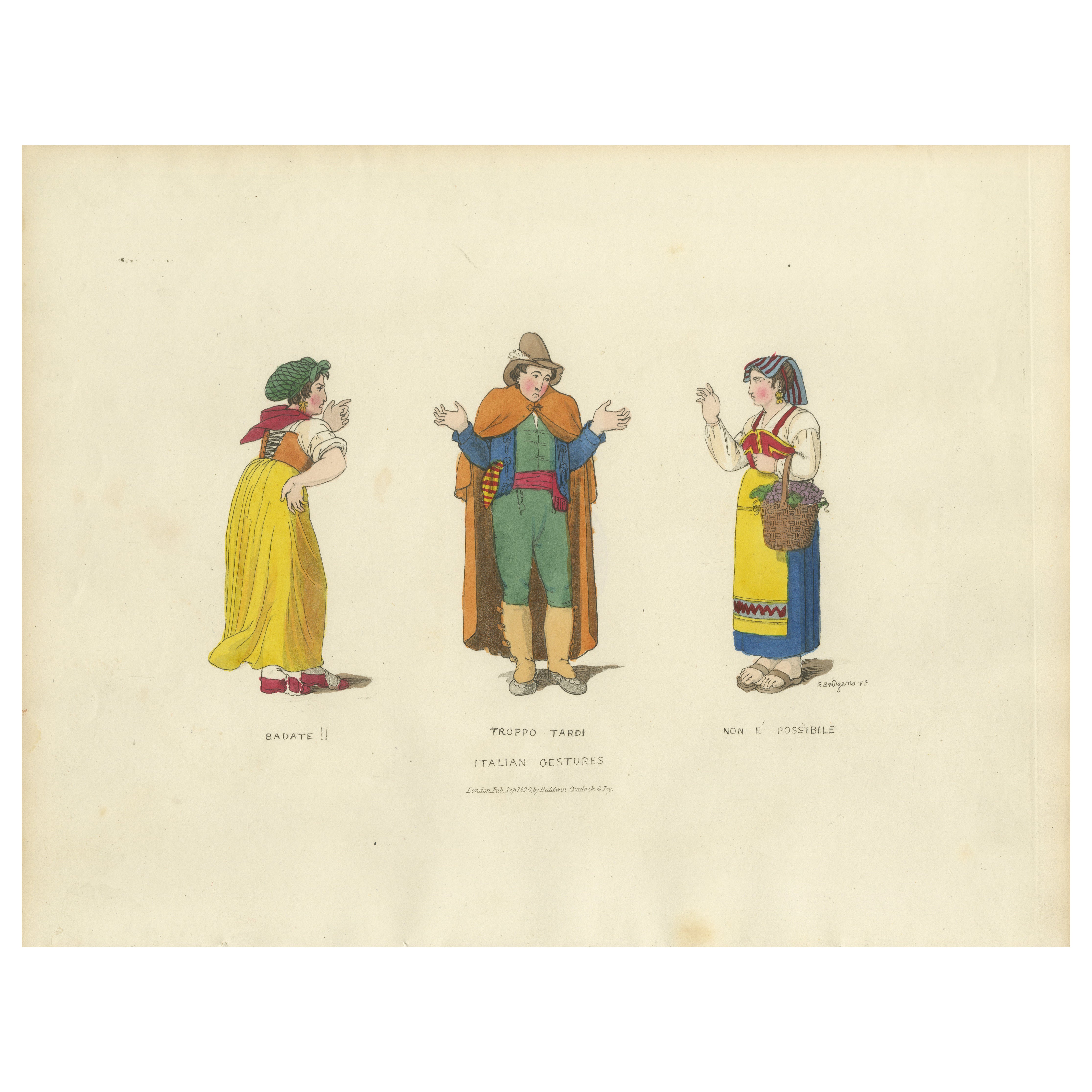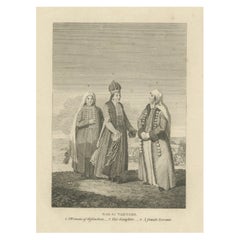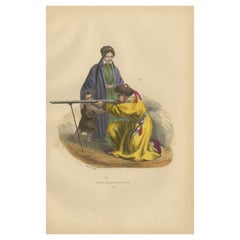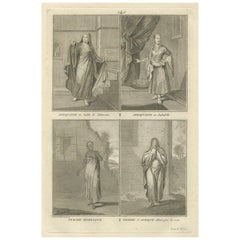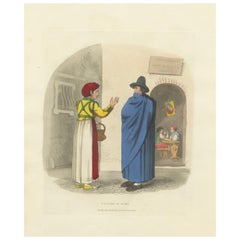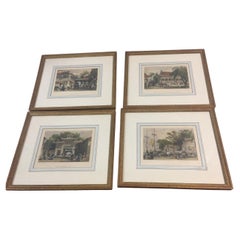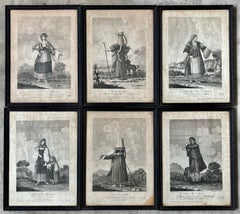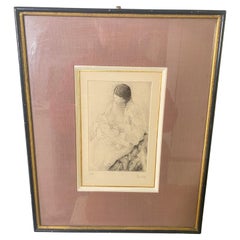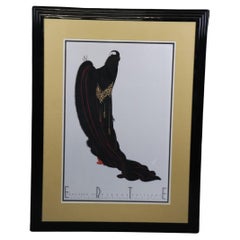Items Similar to Nagai Tartars – Traditional Dress of Women of Distinction, c.1810 Engraving
Want more images or videos?
Request additional images or videos from the seller
1 of 10
Nagai Tartars – Traditional Dress of Women of Distinction, c.1810 Engraving
$214.16
£160.30
€180
CA$294.16
A$328.90
CHF 172.52
MX$3,983.80
NOK 2,177.76
SEK 2,057.46
DKK 1,370.39
About the Item
Nagai Tartars – Traditional Dress of Women of Distinction, c.1810
This delicately hand-colored copper engraving titled Nagai Tartars portrays three women of the Nogai Tatar ethnic group in traditional costume, reflecting early 19th-century European interest in the diversity of peoples within the Russian Empire and Central Asia. The print is captioned below:
1. A Woman of distinction — 2. Her daughter — 3. A female Servant.
The composition features the three figures standing in a grassy open landscape. Each wears richly ornamented garments in bold colors: long robes with golden trim and decorative tassels, white veils covering their hair, and embroidered sashes. The central figure, marked by a taller, elaborate headdress, represents the woman of distinction, while her daughter and servant wear similar but less ornate clothing. In the background, one can discern elements of nomadic life, such as wooden carts, possibly alluding to the group's semi-nomadic traditions.
This print likely appeared in an ethnographic publication such as Costume of the Russian Empire or A Collection of the Dresses of Different Nations, produced in England in the early 1800s for an audience fascinated by exotic customs and imperial diversity. It reflects the era’s growing scholarly and artistic effort to document and categorize the world’s peoples through costume studies, especially those under Russian, Ottoman, and Qing dominion.
The Nogai Tartars (also spelled Nagai or Noghay) are a Turkic-speaking people historically inhabiting the steppe regions north of the Black Sea and the Caucasus. Descendants of the Mongol Golden Horde, they were known for their equestrian culture, Islamized traditions, and later integration into the Russian Empire.
Condition: Good condition overall. Plate impression strong, with original hand coloring still vivid. Light foxing and scattered spotting visible, particularly in the margins. Slight age-toning consistent with early 19th-century paper.
Framing tips: A classic walnut or mahogany frame with a soft cream mat will enhance the period character of the print. Ideal for historical costume or ethnographic collections.
Technique: Copper engraving with original hand coloring
Maker: Anonymous, published in England, c.1810
- Dimensions:Height: 10.67 in (27.1 cm)Width: 8.27 in (21 cm)Depth: 0.01 in (0.2 mm)
- Materials and Techniques:Paper,Engraved
- Place of Origin:
- Period:
- Date of Manufacture:circa 1780
- Condition:Condition: Good condition overall. Plate impression strong, with original hand coloring still vivid. Light foxing and scattered spotting visible, particularly in the margins. Slight age-toning consistent with early 19th-century paper.
- Seller Location:Langweer, NL
- Reference Number:Seller: BG-13600-30A1stDibs: LU3054346173102
About the Seller
5.0
Recognized Seller
These prestigious sellers are industry leaders and represent the highest echelon for item quality and design.
Platinum Seller
Premium sellers with a 4.7+ rating and 24-hour response times
Established in 2009
1stDibs seller since 2017
2,565 sales on 1stDibs
Typical response time: <1 hour
- ShippingRetrieving quote...Shipping from: Langweer, Netherlands
- Return Policy
Authenticity Guarantee
In the unlikely event there’s an issue with an item’s authenticity, contact us within 1 year for a full refund. DetailsMoney-Back Guarantee
If your item is not as described, is damaged in transit, or does not arrive, contact us within 7 days for a full refund. Details24-Hour Cancellation
You have a 24-hour grace period in which to reconsider your purchase, with no questions asked.Vetted Professional Sellers
Our world-class sellers must adhere to strict standards for service and quality, maintaining the integrity of our listings.Price-Match Guarantee
If you find that a seller listed the same item for a lower price elsewhere, we’ll match it.Trusted Global Delivery
Our best-in-class carrier network provides specialized shipping options worldwide, including custom delivery.More From This Seller
View AllSocial Hierarchy of the Nagai Tartars - An Etching by Geissler, ca. 1800
Located in Langweer, NL
Title: "Social Hierarchy of the Nagai Tartars - An Etching by Geissler, ca. 1800"
Description: This etching by Christian Gottfried Heinrich Geissler, titled "Nagai Tartars," is a fine representation of the German School from around the year 1800.
It portrays three figures, labeled to indicate their social standing: a woman of distinction, her daughter, and a female servant, numerically annotated as 1, 2, and 3 respectively. The detailed depiction captures the intricate attire and cultural fashion of the period, reflecting the societal structure and familial roles within the Nagai Tartar community.
The women are adorned in traditional garments that signify their status and identity, while the setting suggests a backdrop typical of their environment, providing a glimpse into the life of the Tartar people at the turn of the 19th century.
The Nagai or Nogai Tartars were part of the Nogai Horde, a confederation that occupied the Pontic–Caspian steppe from about 1500 until they were displaced in the 17th century by the Kalmyks and Russians. They were named after Nogai Khan, a Mongol ruler, and were divided into groups such as the Budjak and Yedisan in the area north of the Black Sea. The Nogais were known to be pastoral nomads who grazed sheep, horses, and camels and were also involved in trade, raiding, and tribute. They spoke a form of Kypchak Turkic and were Muslim, although their religious institutions were not strongly developed. The societal structure of the Nogais was quite fluid, with personal prestige playing a significant role in their political organization. They were historically known for their slave raids across Eastern Europe, which were an important part of their economy.
The term "Tatar" broadly refers to Turkic-speaking peoples, mainly found in west-central Russia and other former Soviet Republics. It was originally used to refer to various nomadic groups from the vast Central and Northern Asian region then known as Tartary. The largest Tatar group is the Volga Tatar from the Volga region in Russia. There are several Tatar groups, including the Volga Tatars and the Crimean Tatars, with the latter being subdivided into groups such as the Tats and the Nogai.
The Tatars have a rich history that dates back to the 5th century when nomadic tribes in northeastern Mongolia around Lake Baikal were first recognized. They became part of Genghis Khan's army in the 13th century and were known to Europeans as Tatars. Following the disintegration of the Mongol Empire, the Tatars were particularly associated with the western part of the empire, the Golden Horde...
Category
Antique Early 1800s Prints
Materials
Paper
$447 Sale Price
20% Off
Free Shipping
Tartar Family in Traditional Dress: 19th Century Ethnographic Illustration
Located in Langweer, NL
Title: "Tartar Family in Traditional Dress: 19th Century Ethnographic Illustration"
Description: This captivating print depicts a Tartar family enga...
Category
Antique 1840s Prints
Materials
Paper
$133 Sale Price
20% Off
African and Moorish Women in Traditional Dress – Rare 1734 Costume Engraving
Located in Langweer, NL
Title: African and Moorish Women in Traditional Dress – Rare 1734 Costume Engraving
Description:
This finely detailed copperplate engraving from 1734 presents four distinct portraya...
Category
Antique 1730s Prints
Materials
Paper
Costume Print: Traditional Dress of Rome, 1820 Hand-Colored Engraving
Located in Langweer, NL
Costume Print: Traditional Dress of Rome, 1820 Hand-Colored Engraving
This charming hand-colored engraving depicts two figures in traditional dress from Rome, Italy, capturing a mom...
Category
Antique 1820s Prints
Materials
Paper
Antique Print of Tartar Tents, Wagon and a Tartar Church, 1714
Located in Langweer, NL
Antique print titled 'Tartatsche Tenten - Tartarische Tentwagen en Kerck'. View of Tartar tents and a Tartar church. This print originates from 'Reizen over Moskovie, door Persie en ...
Category
Antique 18th Century Prints
Materials
Paper
$276 Sale Price
20% Off
Costume Print: Italian Gestures with Traditional Dress, 1820s Engraving
Located in Langweer, NL
Costume Print: Italian Gestures with Traditional Dress, 1820s Hand-Colored Engraving
This engaging hand-colored engraving, titled *Italian Gestures*, captures a lively moment in Ita...
Category
Antique 1820s Prints
Materials
Paper
You May Also Like
S. Bradshaw 1810-1880 English Engravings Set of Four Framed of Chinese Subjects
Located in Savannah, GA
This lovely set of four framed prints are by famed English
engraver, illustrator and painter Samuel Bradshaw 1810-1880. His worked can be vi...
Category
Antique 1840s English Chinese Export Prints
Materials
Glass, Giltwood, Paper
Set of Six Engravings of Italian Regional Dress
By Alessandro d'Anna
Located in New York, NY
Set of six engravings of Italian regional dress. Set of six framed antique engravings from a series of Italian regional dress after Alessandro d'...
Category
Antique Late 18th Century Italian Prints
Materials
Paper
$1,650 / set
Engraving signed France 20th Century a Women with a child
By Alex Berdal
Located in Auribeau sur Siagne, FR
Engraving signed France 20th Century a Women with a child
"Epreuve d'artiste" 20th Century
Category
20th Century French Prints
Materials
Wood, Paper
$256 Sale Price
20% Off
Art Deco Erté Framed Signed Serigraph of a Women Dressed as Dracula
By Erté
Located in Swedesboro, NJ
Dimensions: 42"H x 32"W x 1 1/4inD
This vintage Art Deco Erte (1892-1990) print "Soiree" is perfect for you and your home! Romain de Tirtoff (23 November 1892 – 21 April 1990), kno...
Category
20th Century Unknown Art Deco Prints
Materials
Wood, Paper
Original Antique Print of Macao, China. C.1810.
Located in St Annes, Lancashire
Great image of Macao
Copper-plate engraving.
Published by Sherwood, Neely & Jones . C.1810
Unframed.
Category
Antique 1810s English Prints
Materials
Paper
Shaw & Nodden Engraving of a Merganser
By Frederick Polydore Nodder, Dr. George Shaw
Located in Stamford, CT
A Shaw & Nodden hand colored engraving of a merganser duck in wonderful hand-carved gilt Baroque frame.
Category
Antique Late 18th Century English Prints
Materials
Paper
